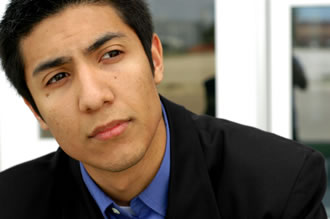Planning and delivering professional supervision


Overview
In this module we will consider the process of professional supervision - from the beginning when you are first negotiating and contracting for supervision with the student/trainee, through to the final session when you are helping them to evaluate and reflect on what they have learnt through the process.
There are 4 areas we will consider: planning supervision sessions, beginning supervision, developing supervision and ending supervision.
Module outcomes

By the end of this module you will be able to:
- Pre-plan your supervision sessions, including settling in a newcomer
- Establish the contract learning agreement
- Develop the supervision relationship and agenda during the period of study
- Understand how the use of techniques such as progressive focusing, recording and analysing events in the workplace can increase the value of supervision in the workplace
- End and evaluate the supervision.
Planning for Supervision

Like most meetings, supervision is usually most effective when both participants prepare themselves properly before they begin.
You will have prepared yourself for supervision through reading and reflecting on the advice given in this course, and thinking about the first supervision session.
The student/trainee should also be planning and preparing for supervision. The course they are studying may give them some guidance as to how to do this. Try to find out if this is the case.
Part of these preparations will involve negotiating some very practical arrangements, such as where and when you will meet. It is important to remember that physical aspects of a learning environment can be a support or a barrier to learning.
Task
How might you create a supportive environment for supervision? Open My Learning Journal and record your ideas in the section 'Creating a supportive environment for supervision'.
If you have already saved My Learning Journal, as described in module 1, please open it now. If you have not yet set up your own journal, click on the link below and save the document to your computer.
- View our thoughts
-
Supervision that takes place within a warm, comfortable space, free from interruption and a ringing phone is more likely to succeed than that which happens in the corridor or next to a busy area of the office.
However your working environment might mean that your supervision discussions have to take place in less than ideal conditions. You may be sitting in a vehicle waiting for the next call-out, or travelling on the way to a meeting or your next house call.
Wherever you plan to meet, the more you can deal with and clarify practical arrangements before a supervision session, whether by phone, email or an initial exploratory meeting, the more time and space you have to focus on supporting the student's reflective practice within the sessions themselves.
Structuring supervision
You do not have the required browser technologies to view this content.
Setting up the first meeting

There are a number of questions you will need to consider when you are setting up your first supervision meeting.
- What do you need to negotiate and clarify before you first meet with the student/trainee? How will you set about doing this?
- What would you expect the student/trainee to have planned and prepared before the first supervision session?
- How will you negotiate the agenda for supervision?
- How do you plan to structure supervision sessions so that they are focused on the student/trainee's learning and reflective practice?
These questions have been included in My Learning Journal. You may want to open it now and record your ideas on these questions. Click on View our thoughts for some tips to help you in this.
- View our thoughts
-
First of all you need to clarify dates, venues, times and durations of your sessions.
You should agree what records you and your student/trainee will discuss together. They should bring these to the supervision session. These might include both written material and other ways of capturing what happens at work. Increasingly new technology using digital photography. Audio/visual recording etc. is available and with appropriate permissions and safeguards can be used to great effect.
Ideally they should send you some documentation before the session so that you can prepare too. The scheduling of this needs to be agreed between you beforehand.
Throughout the sessions, you need to ensure that you provide opportunities for the student/trainee to reflect on their practice in relation to the values and principles involved in the work they do. You may find the diagram on progressive focusing (in the module 'Skills for professional supervision') helpful here.
You need to balance your input to ensure that you can be flexible enough to retain some flexibility in order to meet the student/trainee's individual needs and to respond to whatever questions or concerns they may bring to a session.
Beginning and contracting supervision

Your first session of supervision is likely to set a pattern for how subsequent sessions develop, so it is worth spending some time planning how you might deal with it.
Think about...
This may be the first time you have met the student/trainee. It may also be their first ever session of supervision. So think about the atmosphere you want to create. How can you begin to build a relationship and a rapport between you? What can you do to reduce any potential anxiety (your own or the student/trainee's)?
A good starting point is to draw up a contract so that both of you can share your expectations of supervision and decide how you will deal with difficulties and concerns. You might also discuss:
- Practical arrangements you have already made regarding the first meeting, and what you still need to confirm
- What will actually happen in supervision sessions
- What records you will make of supervision (we suggest this should be the student/trainee's responsibility, but you will need to confirm this)
- If (and how) you will contact each other between sessions.
Each supervision relationship will be different and will depend on the individuals involved, their circumstances and the programme of study your student/trainee is following.
You could use this checklist to help you decide on an agenda for the meeting and think about some common issues.
New to the organisation?
You do not have the required browser technologies to view this content.
You may have a student/trainee who is new to the organisation. Work settings are complex places. Many newcomers to take a while to find out what is on offer and need support to make adjustments through their first days.
The educational responsibilities to new colleagues will increase your workload and could have implications for the quality of your work. So it is essential that this aspect of guidance is considered.
Preparation and induction into the workplace are crucial to the speed and effectiveness with which an individual becomes a functioning part of the team. Careful planning and debriefing activities will support this.
Task
In your experience, what helps newcomers to settle into an organisation? What hinders them from settling in? How can others help? Open the section 'Newcomers' in My Learning Journal and record your answers to these questions. Then think about the last newcomer who came to your workplace and how successfully they settled in. Write down your thoughts in the Journal.
Click on the Start button for some observations about first days from people in a variety of settings.
- View our thoughts
-
This activity may have reminded you of your own first days and the worries of a new work setting, of how difficult it can be to learn an unfamiliar language (often jargon) or your first attempts at a skill. Worrying about these types of thing can obstruct the ability to hear other, sometimes more important, information.
Even in the best settings, newcomers may find it a nerve-racking experience. The more seasoned newcomer may think of their first days as something to be endured, knowing they will eventually settle in and feel comfortable with the staff and find their way around their setting.
Discuss your notes from this activity with a colleague and any newcomers who are currently in your workplace and see how they respond to your ideas and any conclusions you have made.
Developing supervision
As supervision develops, you can begin to build a more established supervision relationship and to focus explicitly on the student/trainee's learning and reflective practice.
Your student/trainee should now be well established in their work-based learning course and have a wide range of material to bring to supervision. You may want to begin your supervision session by briefly recapping on issues that have arisen since your previous session. You can then move quickly on to exploring reflective practice.
Make sure your agenda includes opportunities to review and evaluate the session, and to plan for future sessions. This checklist may help you with your pre-session preparation.

Developing supervision: case study
You do not have the required browser technologies to view this content.
Let's take an example of a supervisor planning a supervision session with a student called Ajay. Listen to the first audio clip to hear the supervisor talking about how he planned the session.
After you have listened to it, think about how the session developed when Ajay and his supervisor met. Then listen to the second audio clip (use the forward button on the audio player) and hear how it develops. You may find it helpful to have the progressive focusing diagram to hand while you listen to the clip.
Task
As you listened to the audio clip could you identify times where Ajay and his supervisor moved between the four quadrants of the Progressive Focusing model? Record your ideas in My Learning Journal, in the section 'Ajay's supervision session'. Click on 'View our thoughts' to see some examples of where they moved between the four quadrants.
- View our thoughts
-
Using day to day language at a 'global level': The planning session with Ajay's manager and co-worker, and the way in which Ajay's supervisor identified Ajay's strengths and weaknesses are examples here.
Using day to day language at 'street level': Examples include catching up on a good news story from Ajay's workplace, starting to discuss the group project and the review and evaluation of the session here.
Using theoretical language at 'global level': Ajay's supervisor discussed group development theories and how learning can be both formal and informal.
Using theoretical language at 'street level': Ajay and his supervisor discussed how the group worked.
You may well have found other examples. Ajay and his supervisor worked across all four quadrants of the diagram in their supervision so they covered theory and practice; as well as looking at situations from street level and more widely.
Promoting professional practice
Task
Consider a recent supervision-type situation in which you have been involved. Ask yourself what types of knowledge your student/trainee was using and developing as a result of the incident. You may want to consider knowledge under headings such as professional knowledge, practical/technical skills and interpersonal knowledge.
Now think about the extent to which you contributed to the student/trainee's development of these various forms of knowledge. Record your thoughts in My Learning Journal, in the section 'Promoting professional practice'.
- View our thoughts
-
You may have done a number of things to facilitate your student/trainee's knowledge:
- Offering agreement and confirmation that the student/trainee has been drawing on appropriate knowledge and making appropriate judgements
- Exploring options with a less confident student/trainee so their knowledge bases are examined
- Move to work with a student/trainee when a situation arises with which they are unhappy
- Offering praise for competent work.
If student/trainees have to spend a long time alone they have to muddle through as best they can.
If you are distracted by other demands your student/trainee is unable to tap into your professional knowledge and so misses out on some valuable experiences.
Ending Supervision
You do not have the required browser technologies to view this content.
Your final session of supervision will be taking place towards the end of the course. Part of the business of your final session of supervision is likely to include taking stock and evaluating the supervision process as it comes to an end. It may also be the ending of your relationship with the student/trainee. If this is the case, you will need to think about how you will handle this.
Listen to the audio clip to hear a professional supervisor, Laura, talking about her final supervision session with her student, Sandra.
Laura and Sandra covered many issues in their last session together.
Task
Think about how you might end your supervision of your current student/trainee (or how you finished supervision with a student/trainee previously).
What might you discuss in your final session with a current or previous student/trainee? Does the course for which you are a supervisor have any formal requirements for this session? What on-going support can you anticipate for your current student?
Record your ideas in My Learning Journal, in the section 'Ending supervision'.
If your student/trainee is about to take examinations, you may wish to check if your college has any documents on preparing and revising for examinations and direct your student to them.
Ending the supervision relationship

Ending the supervision/mentoring relationship can be split into three parts. Click on each of the headings to learn about each part.
- Reviewing the activities you have undertaken
-
During the time you have been working together, you and your student/trainee will have covered a huge amount of ground in terms of discussing and evaluating practice. The final session provides an opportunity to review this. You might like to explore how things work in practice and their views about their strength and weaknesses.
You may find using the SWOT matrix is helpful to you here. We looked at this in the module 'Skills for professional supervision'. If you filled in the matrix in My Learning Journal, you may wish to review it now.
- Identifying learning points
-
This is an opportunity to discuss the process of supervision. How did you feel when you started? How do you feel now? Which parts of the supervision have been helpful to your student/trainee and why?
Two areas you might consider are what feedback you can give on the process and progress of your student/trainee from the point of view of their supervisor, and in what ways your student/trainee has developed during supervision for the course they are studying.
- Looking forward
-
If this is the last meeting with your student/trainee, you may wish to include discussions with them about alternative sources of support and continuing development. Ongoing supervision may be available in their workplace. Alternatively, they might try developing peer supervision and other networks of support.
Looking ahead

One of the purposes of supervision is to support practitioners so that they can move on and operate independently outside the supervision relationship, so it is important that your student/trainee thinks about how they will do this.
Task
What areas of practice does your student want / need to develop from the experience of supervision? How might your student continue to receive the benefits of supervision in their continuing professional development?
Record your ideas on these in My Learning Journal, in the section 'Looking ahead'.
And what about you?
As we discuss at several points in this course, the process of supervision is about you too. During the time you have been a professional supervisor, you will have been reflecting on your own professional practice and experience in order to support your student/trainee. We look at this subject in more detail in the final module of this course, 'Reflecting on professional supervision'.
Summary

- In this module you have learned how to pre-plan your supervision sessions including settling in a newcomer.
- You have discovered how to establish the contract learning agreement.
- You have looked at how to develop the supervision relationship and agenda during the period of study.
- You have understood how the use of techniques such as process recording and progressive focussing events in the workplace can increase the value of supervision in the workplace.
- You nave learned how to end and evaluate the supervision.
You have now finished the Planning and delivering professional supervision module, click on the exit button to close this window.
